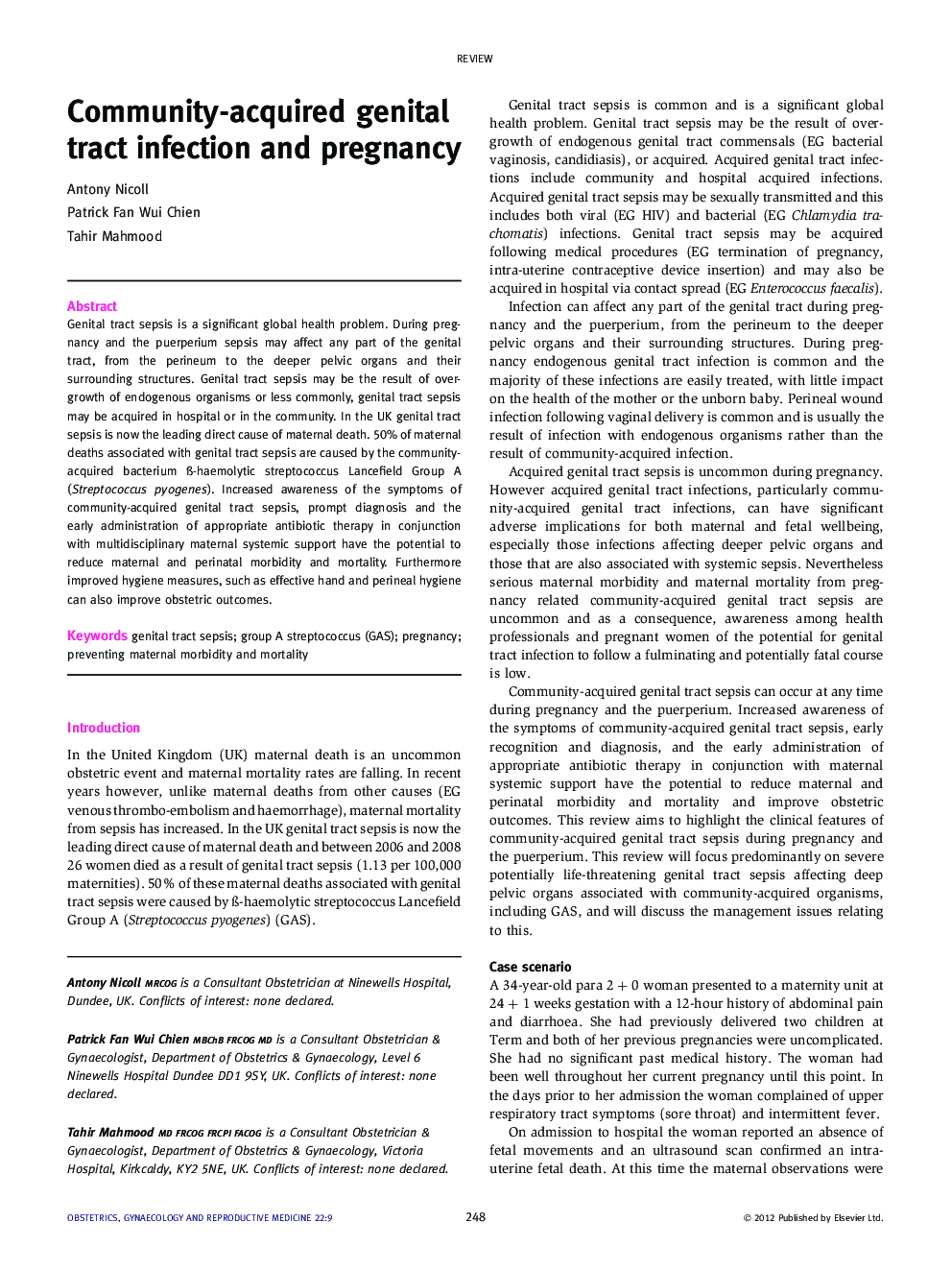| Article ID | Journal | Published Year | Pages | File Type |
|---|---|---|---|---|
| 3967019 | Obstetrics, Gynaecology & Reproductive Medicine | 2012 | 6 Pages |
Genital tract sepsis is a significant global health problem. During pregnancy and the puerperium sepsis may affect any part of the genital tract, from the perineum to the deeper pelvic organs and their surrounding structures. Genital tract sepsis may be the result of overgrowth of endogenous organisms or less commonly, genital tract sepsis may be acquired in hospital or in the community. In the UK genital tract sepsis is now the leading direct cause of maternal death. 50% of maternal deaths associated with genital tract sepsis are caused by the community-acquired bacterium ß-haemolytic streptococcus Lancefield Group A (Streptococcus pyogenes). Increased awareness of the symptoms of community-acquired genital tract sepsis, prompt diagnosis and the early administration of appropriate antibiotic therapy in conjunction with multidisciplinary maternal systemic support have the potential to reduce maternal and perinatal morbidity and mortality. Furthermore improved hygiene measures, such as effective hand and perineal hygiene can also improve obstetric outcomes.
